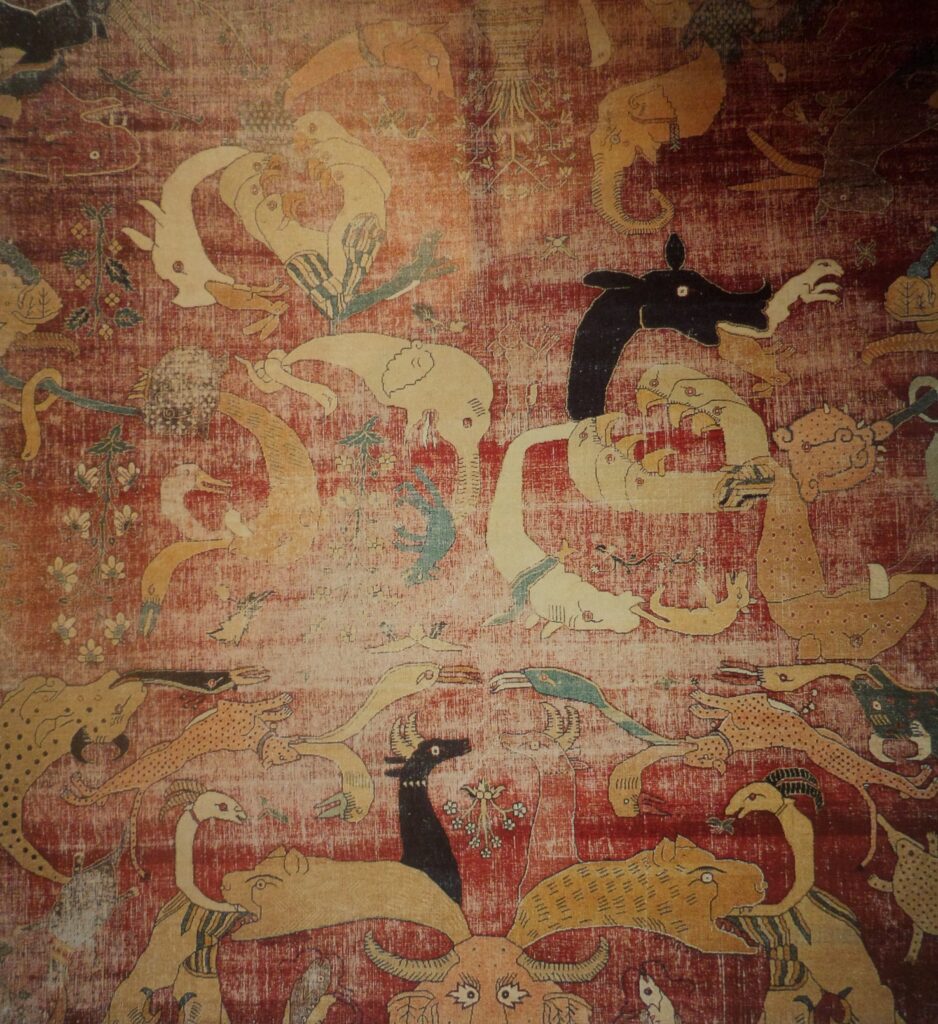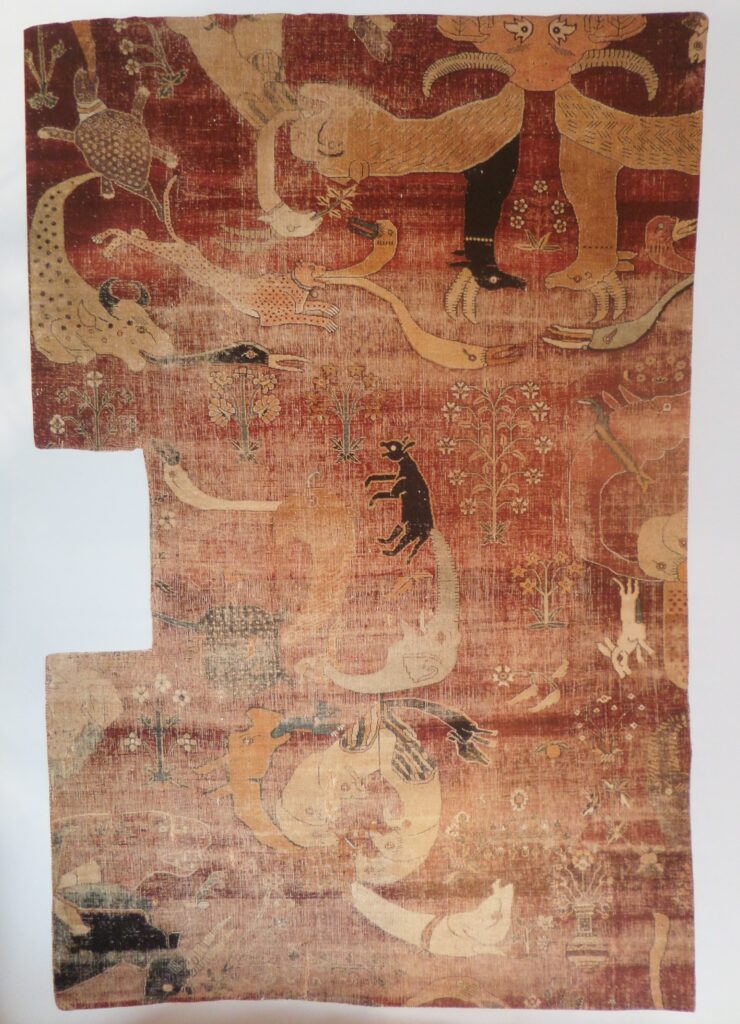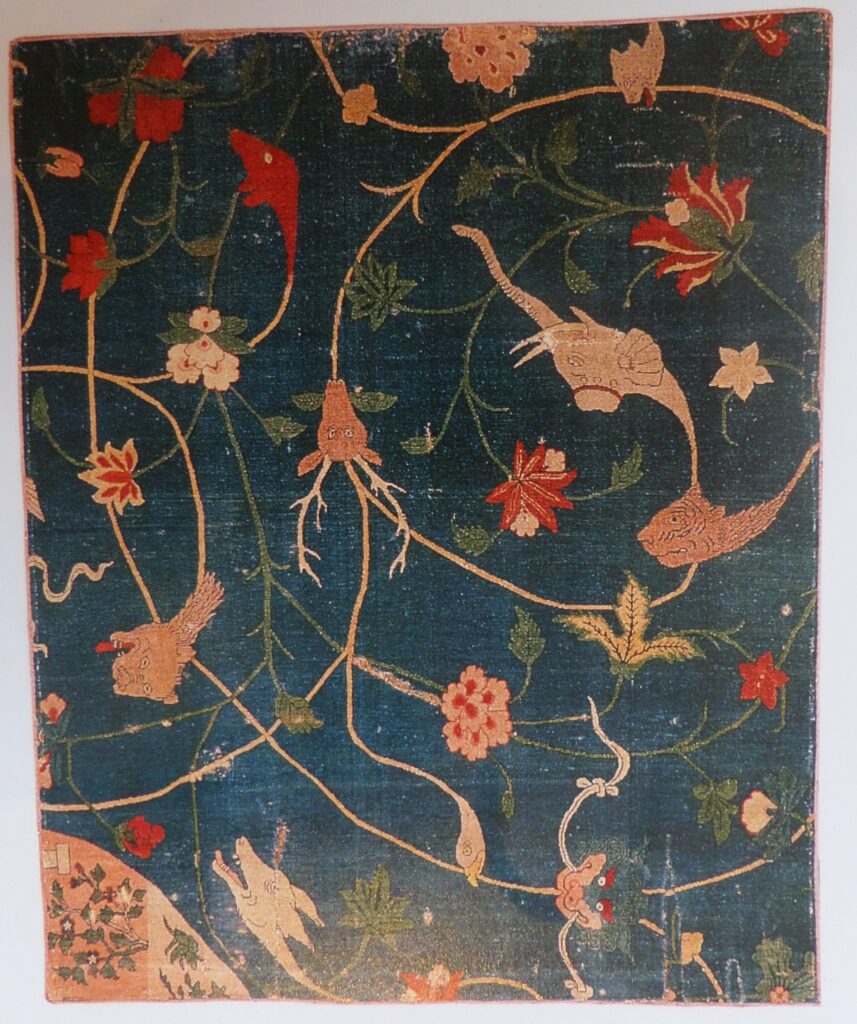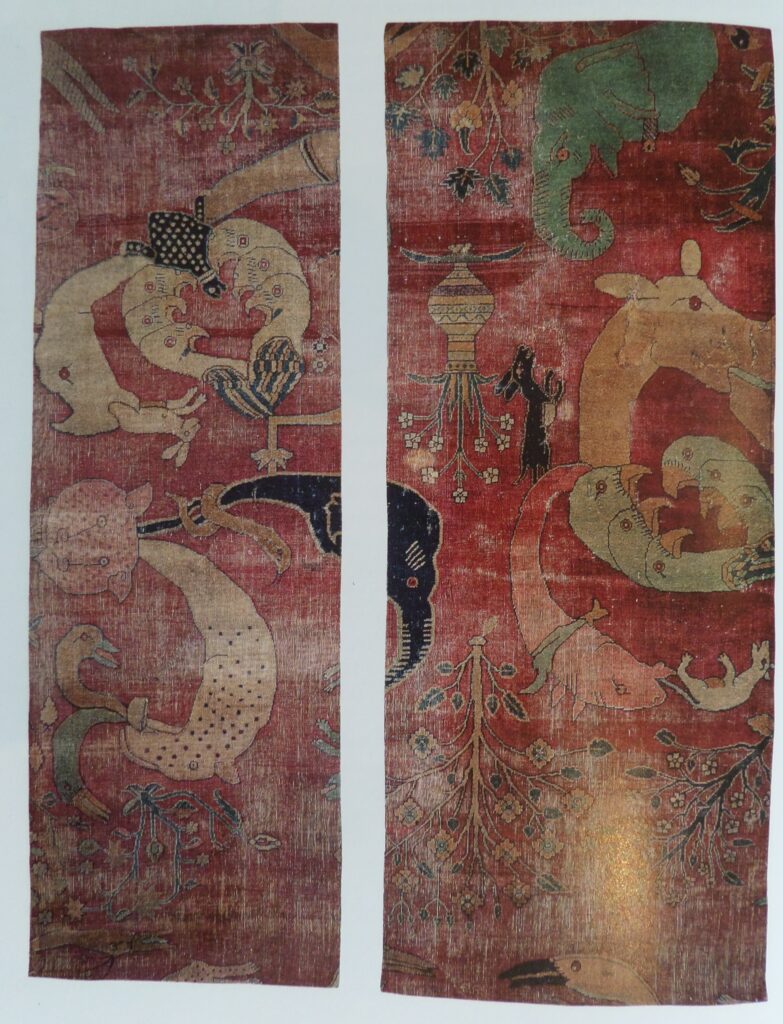Have you ever heard about grotesque carpet history? If not, you should read this article.
You will be amazed at this intellectual dispute about the origin of a rather eccentric-looking rug.
The carpet was labelled grotesque due to its distinct surreal designs. Broadly speaking, the adjective grotesque refers to ornamental features.


In this specific case, grotesque is a synonym of a typology of art that produced extravagant and surreal figures. Such as fantastic animals, plants and monsters. Unicorns are a striking example of this style.
The Grotesque Carpet Design

• The grotesque carpet displays 24 animals, monsters, masks, vases, flowers and plants.
• All the figures are interconnected. By looking closely you can see that all the elements of the rug are interconnected. In fact, there are animal chains formed by animals beating each other’s ends. The inanimate elements sometimes play a part in this extravagant dance, and at other points, they serve to fill the gaps.
•Creatures and their disposition were not unusual during the sixteenth and seventeenth centuries in Europe.
• The carpet is formed of six fragments in total.
• The grotesque style cannot be connected to a single country or period. Indeed, India, Mesopotamia and part of Iran presented motifs linked to the grotesque since their early development. This is especially true in India, where the grotesque style shares common designs with a representation of the God Shiva as the Lord of Beasts.

The Grotesque Carpet History Is ‘Fragmented’
The carpet has now been remade, but at one time it was fragmented. With the pieces being found in different parts of the world. The pieces were finally reunited at the end of the twentieth century.

For this reason, the carpet precipitates a very interesting debate among rug experts. Indeed, various interpretations of the provenance arose.
One of the first theories about the carpet’s history was claimed by the Louvre’s art curator, Migeon. He assumed that the fragments belonged to a rug that was designed by Armenians. Woven by Greeks in the fifteenth century

He was able to associate the red background carpet’s fragments with another fragment showing a blue background. Claiming that they were part of the same rug.
This rather peculiar association was dictated by the similarities of the figures in the two fragments. Apart from this detail, as suggested by Migeon. The drawings are clearly similar to the Indian paintings of the sixteenth century.
This element led other experts to conclude that the rug had Indian origins
Later a Swedish art expert, Martin, argued the falsity of Migeon’s theory and proposed another interpretation: that the rug was in fact Persian (from Kirman) and dated back to the fifteenth century.
What is the Final Conclusion About The Grotesque Carpet History?
Is the rug Indian or Persian? Whatever the origin of the artist who drew the carpet, he certainly knew the paintings popular during the Mughal court (1580-1590).
The Mughal court extended to part of India; however, it was Persianate. Meaning strongly influenced by the Persian culture.

Mughal monsters are very well inserted into the mask of Indian provenance.
The woven big masks clearly derive from the Hindu tradition. Here they are seen dressed up as a Mughal monsters. The syntax between Hindu and Persian inspiration is striking once acknowledged.

This idea can be emblematic of a creative and innovative work of art. However, it puts an end to the long dispute among art experts. As seen in the work by Stephen Cohen in “A fearful symmetry”. Silk and Stone the Art of Asia (1996).
Source: Tilden, Jill. Ed. Silk & Stone The Art Of Asia. London, England: Hali Publications Limited, 1996
